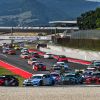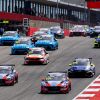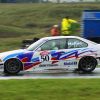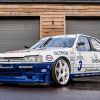Road Cars of Touring Car Racing: Rover Vitesse
The latest edition of “The Road Cars of Touring Car Racing” takes a look at a car whose roots in the Rover SD1 range were dogged by a reputation for poor build quality, amid production that became synonymous with the industrial turmoil of 1970s Britain – the Rover Vitesse, or the “poor man’s Aston Martin.”
As a touring car the Vitesse won the BTCC in the hands of Andy Rouse in 1984 and came close to winning the ETCC in subsequent years, but the history of the car is a complex and muddied one, much like the entire British car industry of the late 1970s.
While the Vitesse didn’t come into being until the 1980s, it’s roots lay back at the beginning of the ‘70s and tell the story of the latter years of the troubled British Leyland firm and their Rover SD1, a car whose derivatives received rave reviews and praise, but whose production was handicapped by a militant workforce.
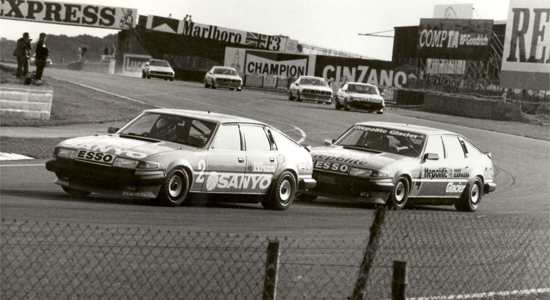
Rover SD1
In 1967 Rover became part of the Leyland Motor Corporation which then itself merged with British Motor Holdings to form the British Leyland company, now responsible for many of the most famous British car brands including Jaguar, Austin, MG, Triumph and of course Rover.
With the latter two now both under the same control, it made sense for a sole model to replace the Rover P6 and the Triumph 2000/2500, rather than have the two brands competing. Both companies were asked to submit plans for a new car, with the Rover proposal of David Bache (designer of the Range Rover and the Series II Land Rover) the winner.
Initially given the codename RT1 (to show this was now a combined Rover and Triumph effort), in 1971 the two companies were grouped together in British Leyland’s Specialist Division, and so the SD1 moniker came into being.
An idea for gull wing doors was dropped, and the car, whose design Bache admitted was inspired by the Ferrari Daytona, was given the green light by the British Leyland board in July 1971.
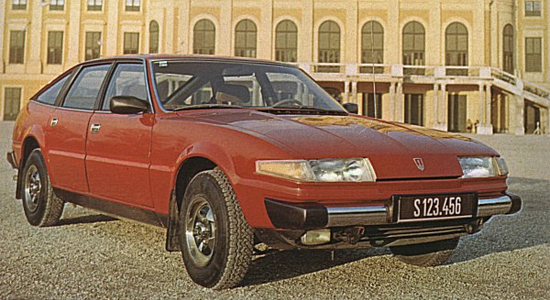
It took a further 54 months for the car to actually reach production however, as a brand new £30 million factory was constructed at Solihull, on the outskirts of Birmingham, specifically to build the SD1.
The factory however soon became synonymous with industrial unrest, so much so that within six years of opening it was closed, and SD1 production shifted to the former Austin factory at Cowley, near Oxford.
Car of the Year
A V8-engined SD1 (the Rover 3500) was launched in July 1976; using an ex-Buick engine that Rover had bought the rights to in the 1960s, combined with a gearbox that had been debuted in the Triumph TR7 rally car.
The 3500 met with rave reviews, praising both its style and its handling and performance. The car that would form the basis of the Vitesse in later years was ahead of its time too, containing ‘new’ features like folding rear seats, a removable rear parcel shelf and an adjustable steering column. At the front the dashboard too was special, in that it was perfectly symmetrical to speed up the manufacturing of both left and right hand drive versions.
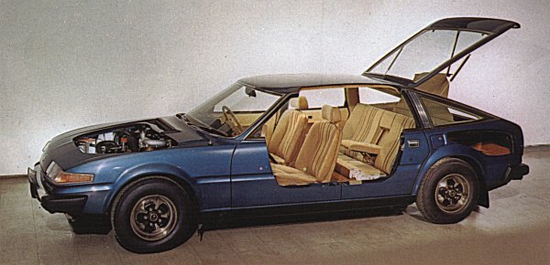
However, because of internal British Leyland politics, the 3500 was priced too low in order that it didn’t compete with the XJ6 of sister company Jaguar. Coming in at just below £4,800, the Rover was also cheaper than rival executive saloons like the BMW 2500 and the Peugeot 604 putting it in direct competition with vehicles like the Audi 100 and Citroen CX, but vastly superior in terms of specification and performance.
This helped the car to win the prestigious 1977 Car of the Year Award, but problems were around the corner. Demand for the 3500 (and sister 2300 and 2500 models launched in 1977 using a six-cylinder Triumph engine) outstripped supply massively, with the new Solihull factory and its three production lines never able to supply the target of 140,00 vehicles per year. In fact they never got close.
1978 was the peak year for production of SD1s, with just under 55,00 produced, mainly because of the continual industrial disputes that gave British Leyland a bad name. There were strikes at all levels affecting both the assembly plant and the Castle Bromwich body shop. The website Austin Rover Online tells of one dispute where six inspectors walked out from the Solihull factory in protest that they were being made to wear brown, and not white, uniforms, causing a build up of finished cars that then couldn’t be signed off.
All three SD1 models began to develop a poor reputation due to reliability problems, mainly linked to the electrics and poor finishing, that tarnished the cars image further and lowered sell on prices. Staff levels at the factory were progressively cut back as the stockpile of cars grew, until in September 1981 it was announced that production would move to Oxfordshire.
The Vitesse
With the move came a chance to revamp the SD1, and so came the Rover 2000 and the SD Turbo, at the time one of the fastest diesels in Europe.
And then in December 1982, launched alongside the MG Metro Turbo, came the Rover Vitesse, built in part, to try and give the whole Rover brand the same sporty appeal as that of BMW.
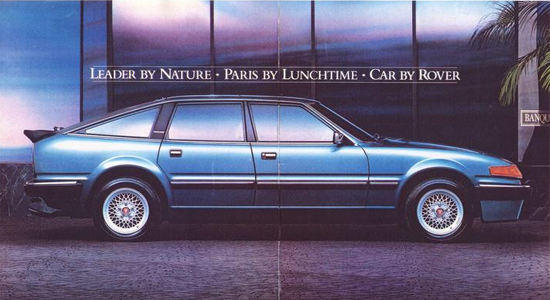
Using the venerable ex-Buick V8, now uprated to provide 190bhp, the Vitesse had body stripes, a spoiler, bigger wheels and lowered suspension, causing Motor magazine to dub it “a poor man’s Aston Martin” in April 1983.
Entrusted to TWR, the Vitesse made its ETCC debut at the Donington 500 in May 1983, with Steve Soper and Jeff Allam finishing in ninth position. A first win came in wet conditions at the Tourist Trophy at Silverstone in September with Soper and René Metge at the wheel.
The following year there were no victories in the European series as Jaguar dominated, but Andy Rouse won the BTCC in his Vitesse, securing the middle of his hattrick of titles.

Even a title win wasn’t straightforward for British Leyland however. Rouse was in a privateer Rover, with the works team withdrawing mid-season in protest at a High Court decision to strip them team of their 1983 title, because of a protest from BMW that the Vitesse’s were equipped with oversized, Volvo, wheel arches!
There was success on the continent too, as Kurt Thiim won the DTM in his Nickel Racing Vitesse.
Rover opened 1985 with a 1-2-3 at Monza, going on to win the opening three rounds, but TWR lost out on the title to the Eggenberger Volvo, although six victories were some recompense. They did win the title in 1986, or at least lay claim to that title for a few weeks before FISA remembered their rule changes and took the title away from Win Percy to give to Roberto Ravaglia.
At the end of the season Rover, alongside Volvo, withdrew, meaning that much like its road going counterpart, the Vitesse came perilously close to being a resounding success on the track, but circumstances (in the form of regulations rather than industrial disputes) hampered the car and prevented it from reaching its true level.
1986 saw the end of SD1 production too, as modern cars surpassed the 1970s design, with Rover bringing out the 800 as a replacement model.
Interestingly, the SD1 did live on briefly in India as the Standard 2000 from 1985 to 1987, produced in Chennai. The car however was a failure, with Standard ceasing car manufacturing altogether, not long after the SD1 finished.
In the UK though, the Vitesse is probably most closely associated with its use by British police forces, who, when production stopped, stockpiled cars, introducing them to service for a further three years and bringing a car from the 1970s into the 1990s.





